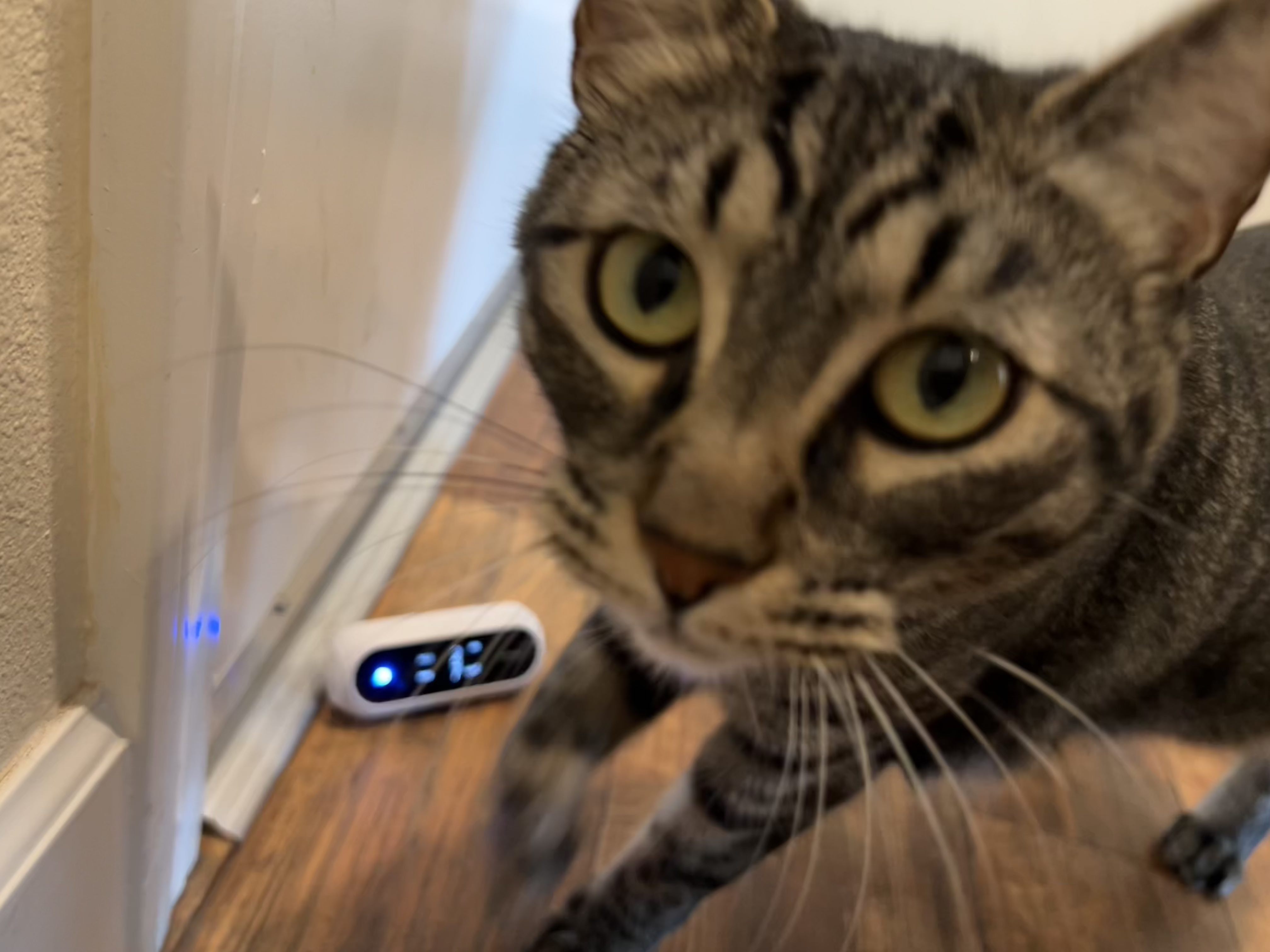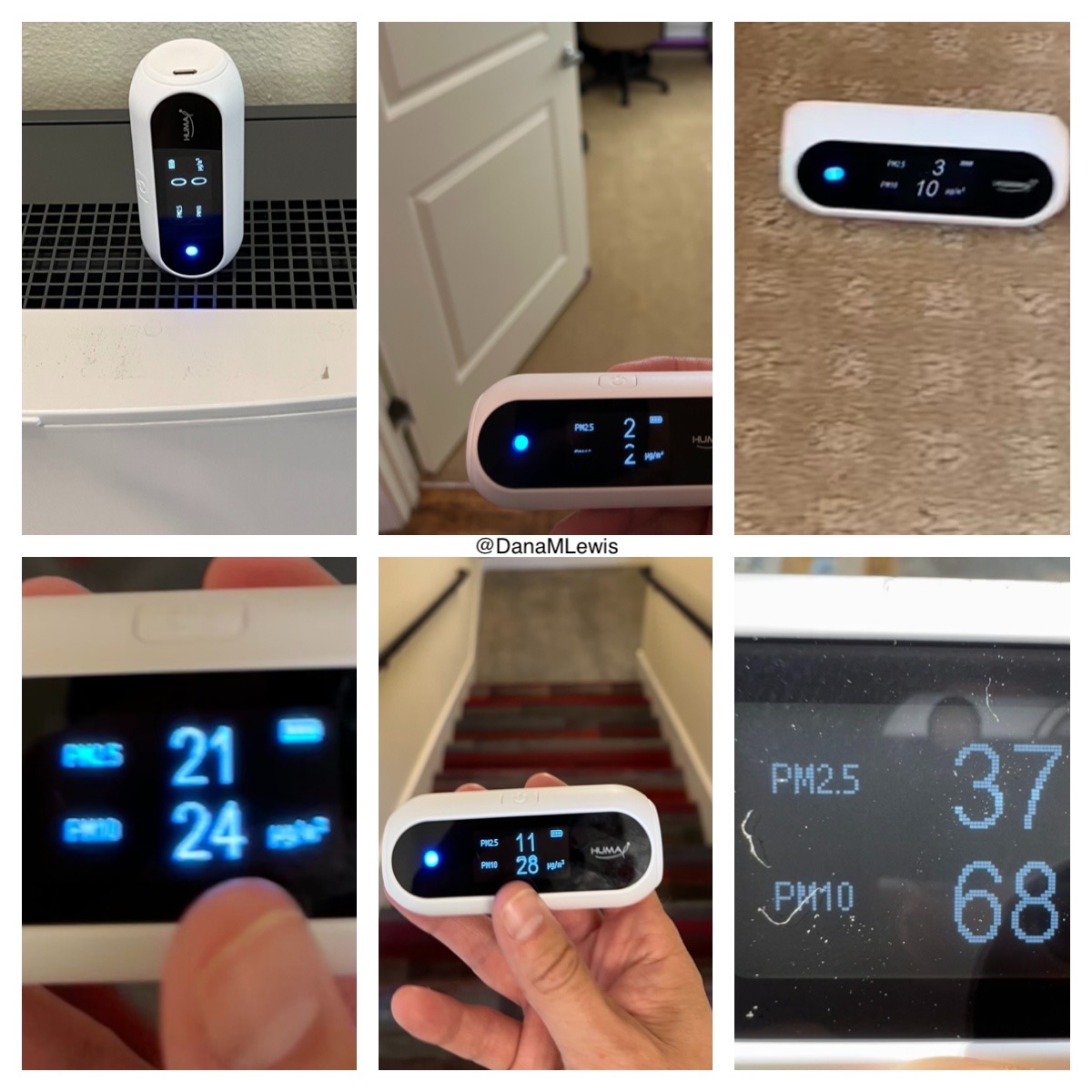In 2020 we had a bad wildfire smoke year with days of record-high heat and poor air quality. It was especially problematic in the greater Seattle area and Pacific Northwest (PNW) where most people don’t have air conditioning. I previously wrote about some of our strategies here, such as box fans with furnace filters; additional air purifiers; and n95 masks. All of those are strategies we have continued to use in the following years, and while our big HEPA air purifier felt expensive at the time, it was a good investment and has definitely done what it needs to do.
This year, we got to September 2022 before we had bad wildfire smoke. I had been crossing my fingers and hoped we’d skip it entirely, but nope. Thankfully, we didn’t have the record heat and the smoke at the same time, but we did end up having smoke blowing in from other states, and then a local wildfire 30-40 miles away that has been making things tricky for several days on and off…several different times.
I’ve been training for an ultramarathon, so it’s been frustrating to have to look not only at the weather but also the air quality to determine how/when to run. I don’t necessarily have a medical condition that makes me higher risk to poor air quality (that I know of), but I think there’s some correlation with being allergic to a lot of environmental things (like dust, mold, trees, grass, etc) that makes it so that I also am more sensitive to most people I know to poor air quality.

Everyone’s sensitivity is different, but I’ve been figuring out thanks to multiple stretches of up and down AQI that my threshold for masking outside is about 50 AQI. If it gets to be around 100 or above, I don’t want to be walking or running outside, even with a mask. And as it gets above 150 outside, it becomes yucky inside for me, too, even with the doors and windows closed, the vents on our windows taped shut, and air purifiers and box fans etc running. My throat was scratchy and my eyes hurt, and my chest started to feel yucky, too.
It got so bad last week that I took a small, portable mini air purifier that I had bought to help mitigate COVID-19 exposure on planes, and stuck it in front of my face. It noticeably made my throat stop feeling scratchy, so it was clearly cleaning the air to a degree. On the worst days, I’ve been sitting at my desk working with the stream of air blowing in my face, and I’ve also been leaving it turned on and pointed at my face overnight.
This is kind of a subjective, arbitrary “this helps”, but today we ended up being able to quantify how much it helps to have our big air purifier, box fans with furnace filters, smaller air purifier, and the mini air purifier. Scott ordered a small, portable PM2.5 / PM10 monitor to be able to see what the PM2.5 and PM10 levels are in that exact spot, as opposed to relying on IQAir or similar locally reported sensors that only tell us generally how bad things are in our area.
It also turned out to be useful for checking how effective each of our things are.
It turns out that our box fans with furnace filters taped to the back are most effective at fan speed “1” (they all go up to 3), probably because putting it up to 3 is prone to stirring up dust from the floor (despite robot vacuuming multiple times of day) and increasing PM10 levels. A box fan with 2” MERV 10 filter taped to the back doesn’t affect the already-low PM2.5 levels indoors; on fan level 1 the PM10 gets reduced to zero as long as it’s not pointed at the carpet and stirring up dust. So while it doesn’t help with smoke, these fans are good with increasing circulating air (so it feels cooler) and getting rid of the dust and cat hair that I’m allergic to.
The big HEPA air purifier we bought has a connected app that tells us the PM2.5 levels, and our portable PM2.5 monitor confirms that it’s putting out air with a PM2.5 level of 0. Yay! This sits in our kitchen by our front door, so it helps clean the smoky hallway air coming inside.

The hallway air is TERRIBLE. The hallway opens directly to the parking garage, and is usually about as smoky as the outdoor air: it only has a single A/C duct for the whole building, which isn’t always running. The stairwell leading outside is a little cleaner than the hallway and outside. (So I’m glad we have our best air purifier situated to take on the air coming in when we open the hallway door). So we won’t be spending time exercising in the hallways, either; with that level of air quality you might as well be outside anyway, because we need to be masked either way.
The other purifier we have is a smaller purifier. I have it sitting on the counter in our bathroom, because the air exchange to outside is really reduced compared to what it should be (and the building management doesn’t seem very interested in trying to figure out how to fix it). That purifier gets PM2.5 down from 4 to 1 ug/m^3, or about a 4x improvement! Which is pretty good, although not quite as good as the big purifier in our kitchen/entry. Since it’s small enough to sit on a desk or bedside table and blow clean air at me where I’m working or sleeping, we decided to order 2 more of these smaller purifiers for my office and our bedroom, since the box fans take care of PM10 but not the PM2.5.

Since the portable air quality monitor would be hard to fit inside his mask or his mouth, and impossible to read there, Scott also held up the PM2.5/10 monitor to the exhaust valve on his n95 mask (note: not all our n95 masks our valved but the valved ones are good for wildfire smoke and managing temperature levels inside your mask when exercising) while outside, and the average PM2.5 level there is about half that of the ambient air. Since about half the time he’s breathing in (and the meter is sucking in outside air) and the other half of the time he’s breathing out (so it’s getting the mask-filtered air he inhaled and then exhaled), this suggests that the mask is doing it’s job of reducing PM2.5 levels he’s breathing inside the mask to very low levels (probably about the same as our very clean indoor air).
He also held it over the small air purifier that I’ve been keeping my face over. It, too, reduces PM2.5 down to about 2 – so not as good as the bigger purifiers, but a ~2x improvement over the ~4 in the ambient air that I would otherwise be breathing.
TLDR:
- Box fans with MERV 10 filters are great for allergens and PM10, but don’t noticeably reduce the PM2.5. Higher MERV filters might do better, but are very expensive, and probably less cost-effective than a purifier with a proper HEPA filter.
- Small and big air purifiers work well for reducing PM2.5.
- N95 masks are effective at drastically reducing the PM2.5 you’d be exposed to outside.
- If you’re like me and are bothered inside when the air quality outside is bad, additional air purifiers (small or big) might help improve your quality of life during these smoky days that we are increasingly getting every year.
Recent Comments